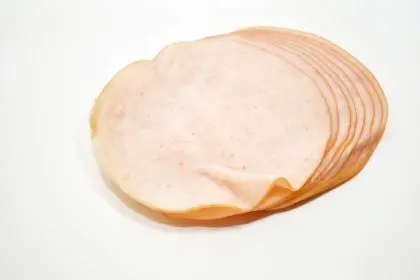Expert tips ensure bug-free baking supplies

The renewed focus on proper flour storage
Proper flour storage has taken center stage in food safety discussions, thanks to recent viral social media posts revealing alarming discoveries of pests in sealed containers. These incidents have highlighted the critical importance of effective storage practices, prompting home bakers and professionals alike to rethink how they handle this staple ingredient.
Understanding flour pests
The hidden threat of weevils and other insects:
Flour pests, particularly weevils, present challenges far beyond mere inconvenience. These tiny insects can infiltrate grain products at various stages of production and distribution, often before they even reach your home. Once inside your pantry, they can rapidly multiply, contaminating other food items and leading to waste.
Weevils and similar pests are drawn to flour’s nutritional composition, making it an ideal environment for them to thrive. Their presence is not only a hygiene concern but also a significant blow to the quality and usability of your baking ingredients.
Prevention strategies
How to keep pests at bay:
Preventing flour infestations starts with implementing proactive measures as soon as you bring products home. Food safety experts recommend a combination of thoughtful practices to reduce risks and maintain ingredient integrity.
Begin by inspecting packaging at the store for signs of damage or small holes, which can indicate pest activity. Upon returning home, consider freezing new flour purchases for at least 48 hours. This simple step kills any potential pests or eggs before they can develop.
Additionally, prioritize rotation. Always use older flour before opening a new package, ensuring nothing sits unused long enough to attract pests.
Storage solutions
The role of proper containers and environment:
Flour storage goes beyond tossing bags into a pantry. Proper storage techniques can significantly extend the shelf life of flour while reducing the risk of pest infiltration.
- Airtight containers: Glass or metal containers with tight-sealing lids provide an effective barrier against pests. Unlike their plastic counterparts, these materials resist chewing and limit airflow, creating an inhospitable environment for insects.
- Pantry organization: A clean, well-organized pantry minimizes hiding spots for pests and ensures you can quickly identify potential issues. Avoid overstocking and keep flour in a designated area.
- Temperature and humidity control: Storing flour in cool, dry conditions is crucial. High humidity fosters mold growth and provides ideal conditions for pests to thrive. Consider using moisture absorbers if you live in a particularly humid environment.
- Regular inspections: Periodically check stored flour for clumping, discoloration, or movement—tell-tale signs of pest activity. Early detection can prevent an infestation from spreading to other pantry items.
Managing discovered infestations
Steps to take when pests invade:
Discovering pests in your flour can be unsettling, but swift action can prevent the situation from worsening. Start by disposing of the infested flour in a sealed bag to prevent pests from escaping. Avoid dumping the flour directly into indoor trash bins, as pests may find their way back to other food sources.
Thoroughly clean the affected storage area with soapy water and disinfectant, ensuring all traces of pests or eggs are removed. For reusable containers, wash them with hot, soapy water before drying them completely.
After addressing the immediate issue, implement preventive strategies to avoid recurrence, such as using airtight containers and closely monitoring pantry conditions.
Modern storage innovations
Technology-driven solutions for today’s kitchens:
Modern advancements have introduced innovative solutions for maintaining pest-free flour storage. Airtight containers with built-in vacuum seals remove excess air, creating an environment that is less conducive to pest survival.
Some storage systems also feature pest-repellent coatings or materials that actively deter insects from settling inside. Additionally, digital temperature and humidity monitors can help maintain optimal storage conditions, reducing the likelihood of mold or infestation.
For those seeking convenience, smart storage devices that integrate with mobile apps are becoming increasingly popular. These systems can notify users when flour levels run low or conditions become unsuitable, ensuring consistent quality and safety.
Future of flour safety
Evolving standards for improved food storage:
The focus on proper flour storage is part of a broader movement to enhance food safety standards. As research continues to uncover best practices for preserving pantry staples, consumers are gaining access to more effective tools and strategies.
The future may bring even greater innovations, such as packaging with built-in pest deterrents or eco-friendly containers that maintain flour quality while reducing environmental impact.
Ultimately, proper flour storage practices benefit not just individual households but also the larger food industry by minimizing waste, reducing contamination risks, and promoting sustainable habits.
Conclusion
Recent viral revelations have brought much-needed attention to the importance of proper flour storage. From understanding the threats posed by weevils to implementing effective prevention and storage techniques, maintaining pest-free baking ingredients requires a combination of diligence and modern solutions.
With thoughtful practices and innovative tools, anyone can protect their pantry from unwelcome surprises, ensuring flour remains fresh, safe, and ready for use in your favorite recipes.














